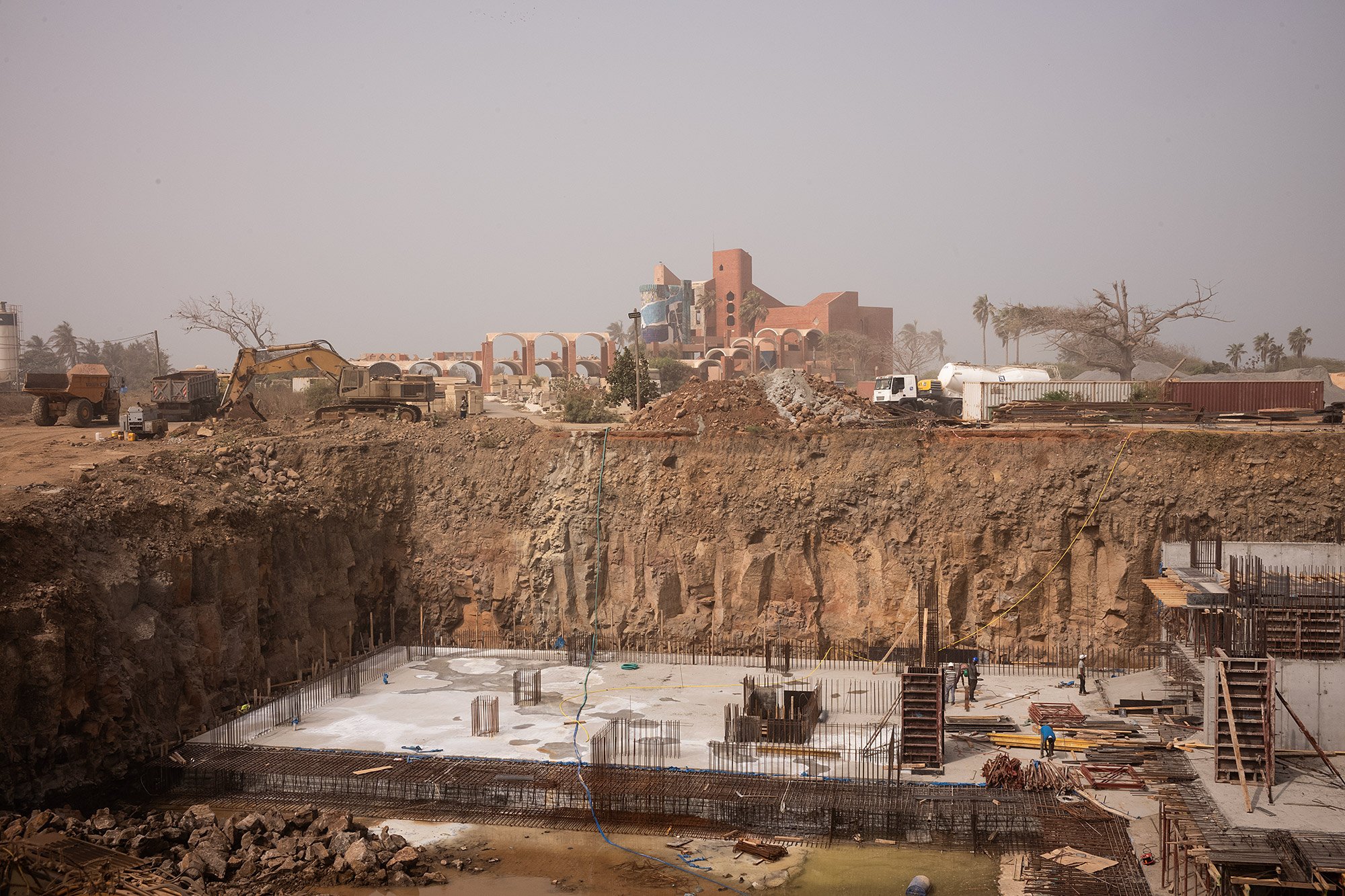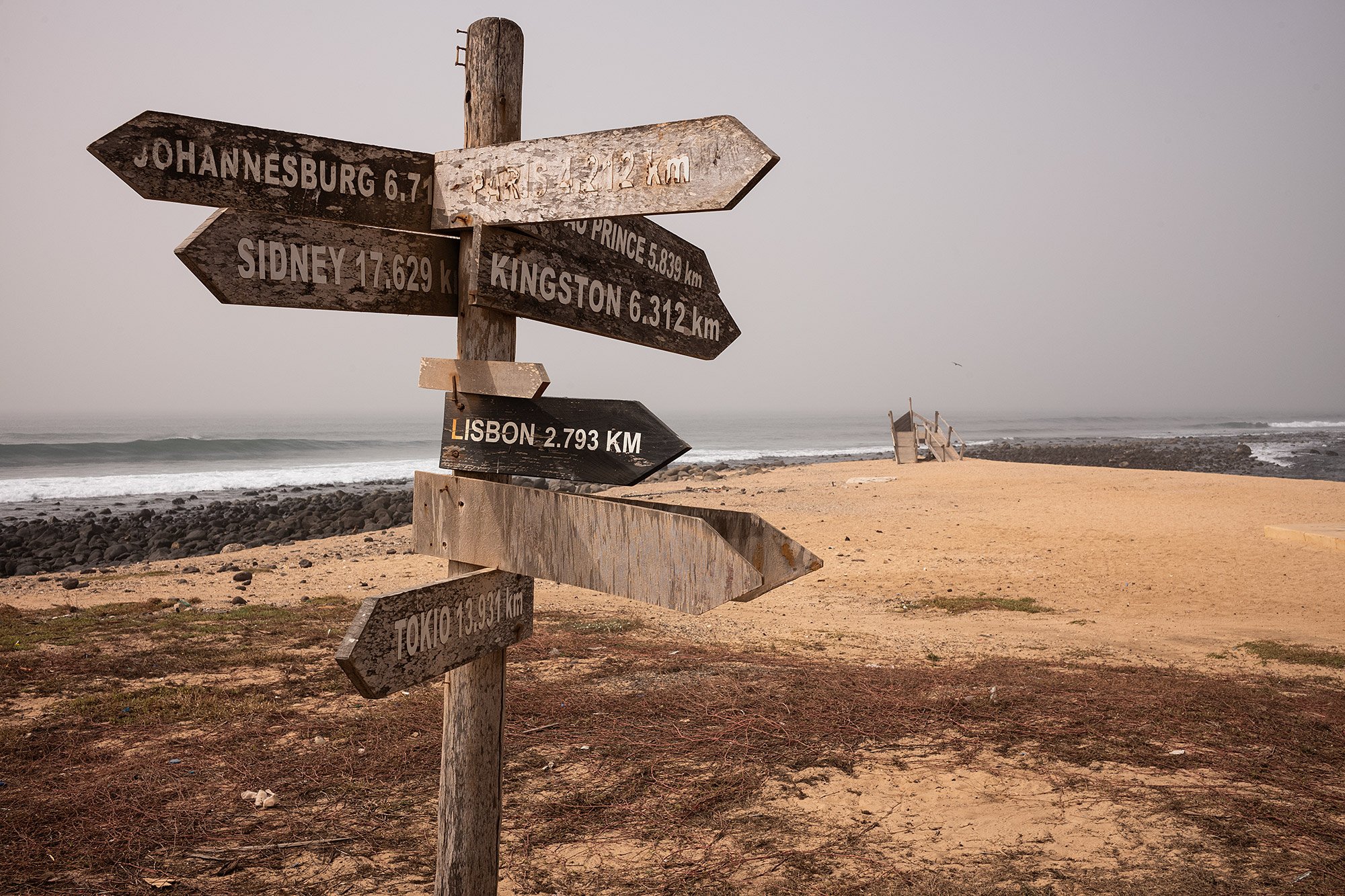
Senegal coda 2
The western-most point of Afro Eurasia.
It’s my last full day in Senegal this trip and I decide to take myself out to lunch in Alamedes. There’s a restaurant I’ve been meaning to try; they have thiéboudiène on the menu, which will be a perfect culinary send-off.
Looking at the map, Google lists a point of interest not far from the restaurant: The Westernmost point of Afro-Eurasia. I had thought this was marked by the lighthouse Amadou had shown us, but after seeing this demarkated on the map, I’m determined to visit the spot.
Years ago, I had tried to visit the southern tip of Africa. I was in Capetown for the World Cup and we rented a car to visit the penguin colonies to the south and make a day trip out of it. Unfortunately, lunch went long and we arrived at the entrance to Cape Agulhas five minutes after it had closed.
On Google, it’s unclear exactly how to get to the point. A year ago, reviews speak of a hotel you must pass through (with some vitriol cast at said hotel for privatizing the spot). More recently, there are reports of the area having become a huge construction zone and needing permission from the guards to enter. I decide I’ll do my best and call a Yango to take me to the restaurant.
On the map it looks like there might be a way to reach a beach just south of the restaurant. From there, it might be possible to walk along the coast to the point. Unfortunately, the road stops at a bunch of restaurants. And so I walk back to find another approach, circumambulating the US Embassy to follow another road south that seems to terminate near the point.
It’s then that I see the construction zone. A building that looks like it was the hotel is in various states of demolition. A huge foundation has been dug beside it. Workers swarm around the site, trucks and machinery lumber about.
Winds have been blowing the past few days, engulfing Dakar in sand and dust. It’s made the days hazy, the skies ochre.

At the end of the street a dirt road leads into the construction site. As I approach a guard detaches himself and approaches. “Salaam walekum.” “Walekum salaam,” Yoff replies. “You speak Wolof?” “I wish,” I tell him. “But salaam walekum” he says. “It’s Arabic, no?” He laughs.
“You want to visit the western-most part of Africa.” He guesses. Yes please. I’d like to take some photos. “You go, five minutes, come back,” he says. “Follow the dirt road, around the tall tank, just past the coconut trees. You see the trees?” I nod and thank him and head into the site.
Nearing the edge of Africa I can see a signpost and an elevated viewing platform from between the palms. It’s a pretty non-descript place. Hawks perch on a tree by the ocean. Waves crash.


Hawks perch on the viewing platform. They fly away one by one as I come near. I wonder if any are the hawks that visit me every morning, picking at the plants on the balcony, screeching their greetings.
The platform is shaped like a ships prow, sunk into the ground at an angle. I climb upon it and stare out over the ocean. Tomorrow I’ll be flying to Lima, trading my views of the eastern edge of the Atlantic for the eastern edge of the Pacific. I can’t escape the symmetry.
It’s a beautiful spot; perhaps the most beautiful spot I’ve seen in Dakar. Standing at the edge of the second-largest continent in the world, I listen to the ocean crash around me. I feel at once tiny amidst the magnitude of the earth and yet surprisingly powerful. It’s as if on this spot the earth knowingly shares its energy with me, shows me from whence I came, claims me as one of its own. One day I shall return to its embrace.




I climb down from the viewing platform to walk along the beach and on the rocks. I want to get closer to the edge. I stand and stare at the sea, the sky; the horizon blurs between them. I breathe in the air. The sand and the spray brush against my skin.
And then it’s time to turn around, retrace my steps back towards the city, the guard who has kindly let me visit this spot, the journey ahead.



I pass the remains of the hotel that once was and wonder what is to come. When I arrive back at the guard post Yoff is not there. Another guard has rotated in to take his place. He’s talking with a man on a scooter who wants to pass. He tells him he must go around to get to his destination. He looks at me as if wondering how I managed to secure passage.
I thank the guard and walk back towards the restaurant, passing once again the U.S. Embassy, where guards stand languidly at the gates, gardeners water the plants.



At the restaurant I order thiéboudiène. It’s a huge portion, more lavishly plated than that I had on the beach on Ngor last weekend, but I can’t say it’s better. Just different. And it’s interesting to compare the two eaten on either end of the week. They’re both delicious.
For dessert I ask the waitress what she recommends. She points out the chocolate cake or the pain perdu. I had seen the latter on a menu earlier in the week and ordered it as it sparked the memory of a French friend I haven’t seen since she left New York many years ago. It was her favorite dessert.
I order it to live once again in the memory of sharing one with her in a dark New York City restaurant on a night long-past, an impression with faded edges brought back from a corner of my mind.
25 January 2024
🇸🇳












